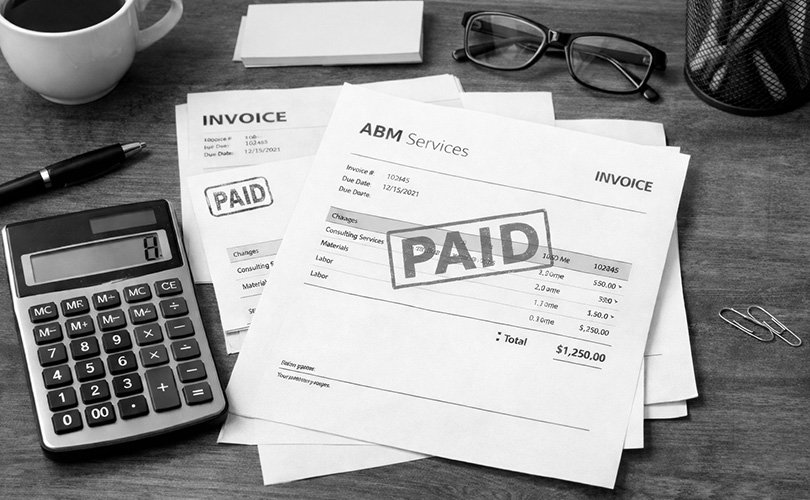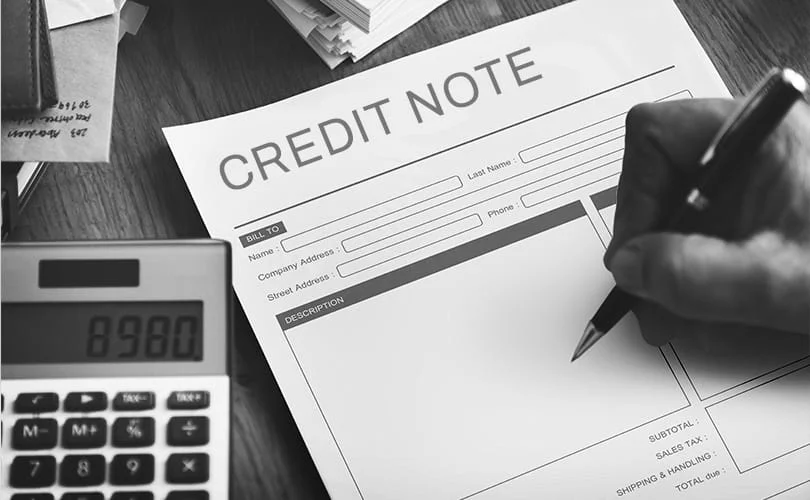Credit Notes- What Are They and How Are they Useful To Receivables and Payables

Credit notes are an important financial instrument that play a key role in accounting transactions – accounts receivable and accounts payable. Credit notes are normally used to correct overcharges, wrong item delivery or service cancellations.
Credit notes are represented as a credit memo which adjusts the invoice value of goods and services. They are a very good instrument for settling disputes over overpricing or quality between the company and the customer or the company and the vendor. Remember that when you issue a credit note, adjustments must also be made to GST.
This facilitates smooth functioning of the business and maintains cordial relations between the parties concerned.
Taurus Collection, a credit collection agency, can help clients effectively use credit notes to reduce debt by ensuring they are accurately applied against outstanding invoices, thereby lowering the total amount owed. Our expert team assists clients in reconciling accounts, undertake invoice management, verifying credit note validity, and negotiating with debtors and accurate application of payments against outstanding invoices to streamline payments. By strategically offsetting liabilities, Taurus Collection enables businesses to maintain healthy cash flow and minimize financial risks through structured debt recovery processes.
What is a credit note?
A credit note is a memo used between sellers and buyers to provide an instantaneous credit and help reduce the invoice amount that the seller has to pay. It can be used to indicate a return of goods, pricing errors in the initial invoice, any discount or rebates applied after the sale and also to cancel an invoice totally.
It helps to reduce the buyer’s liability and can be used to offset future payments or extinguish a liability. A credit note must be complete in all details like the original invoice number and amount, the reason why the credit note has been raised and the revised amounts outstanding. A credit note brings transparency to financial transactions and helps clear disputes between parties. As such, it is very useful.
How can credit notes be a useful tool in managing debt?
Reduce outstanding debt:
- A credit note helps to reduce outstanding payments to suppliers when there is erroneous billing, refund payable or adjustment to customers because of over payment, returned goods or billing errors.
Improving cashflows
- As outstanding debt reduces due to the issue of a credit note, this automatically signals an improvement in the cashflows of the company.
Reduction in interest payments
- As the outstanding debt gets pared down, automatically the interest payments reduce as the outstanding receivables/payables balance reduces. There will also be no late payment interest charges applicable.
Improved relations with debtors and creditors
- Credit notes help to avert potential conflict situations with debtors and creditors. Credit notes act as a sweetener with the promise of reduced outstanding balances and contributes to improved business relations.
Special consideration for credit notes in India.
It is important to distinguish between GST adjusted and non-GST adjusted credit notes in India. In case of GST adjusted credit notes, it is necessary to make output tax adjustments in the GST tax filing.
Differences between a credit note and a debit note
A credit note reduces outstanding liabilities of a debtor whereas a debit note does the opposite. It increases the outstanding liabilities.
How does a credit note work?
As a corrective document, a credit note helps to rectify the buyer’s transaction record makes changes to the original transaction record.
Identification of the error
- This includes the identification of the original error, wrong product delivery or a defective delivery. Either party to the transaction may identify and bring up the issue.
Issue of the credit note
- As the original transaction record cannot be changed, the credit note is issued as an accounting record.
Adjustments in the accounting records of both parties.
- The adjustments are made in the books of both parties to reflect the new reality. This means lower outstanding amounts for debtors and less receivables for creditors.
Legal Implications
- A credit note also has legal implications in that it must follow the tax and accounting precepts.
Types of credit notes
Incoming credit notes
- These are issued by the company’s creditors and are favourable to the company as it reduces the outstanding payables
Outgoing credit notes
- These are issued by the business to its customers. This reduces the company’s receivables from debtors.
Impact of credit notes on receivable and payable management
We have already discussed how credit notes impact accounts receivables and accounts payable in the preceding paragraphs.
Some additional effects include the following:
Impact on loan outstanding of the business
- If a business issues frequent credit notes to its customers, this can reduce its potential revenues. This in turn means lower cash inflows which affects the financial viability of the business leaving it unable to manage its short term and long-term debt effectively. This also affects the credit standing of the company
Inadequate collateral
- Low revenues due to credit notes means the company cannot provide sufficient collateral to lenders for loans
Tax implications
- It is very important to understand the tax implications of a credit note which arises from whether a product has GST or Non-GST implications.
Conclusion
Credit notes play a crucial role in receivable and payable management by reducing outstanding balances, improving cash flow, and maintaining accurate financial records. They help businesses correct billing errors, issue refunds, and strengthen customer relationships. By adjusting accounts receivable, credit notes prevent disputes and enhance financial transparency. Additionally, they support compliance with accounting standards and reduce the risk of bad debts.
Overall, credit notes contribute to effective debt control, fostering financial stability and business sustainability.
In accounts receivable, they streamline financial reconciliation, fostering trust with clients and accelerating the recovery process.
To optimize your credit management and enhance cash flow, partner with Taurus Collection today. Contact us to streamline your receivables and recovery processes efficiently!
A credit note (also credit memo), sometimes simply referred to as a memo, is a document that the seller presents to the buyer with the aim of reducing or even eliminating the amount he/she owes on an earlier invoice. It is used in a number of cases, including the situations with a customer returning goods that are damaged, the situation when an order is canceled despite being invoiced, and the case when a wrong price has been proposed, and it needs fixing. As an alternative to a cash refund, rather than the cash itself, a credit note is issued putting a balance amount in the customer account that can be spent on later purchases.
Credit notes are not an isolated type of account; they impact both an account payable and account receivable. In the perspective of the seller, a credit note minimizes the amount of money owed to him or her (its ‘accounts receivable’). On the side of the buyer, it decreases their accounts payable (money that they owe).
The journal entry of a credit note varies with the users posting it.
To the seller: Credit note is used to deduct the sum of a sale. Debit Sales Returns and credit Accounts Receivable would normally be used as the journal entries.
With the buyer: Giving credit note will lessen the debt. The debit entry would be Accounts Payable and a credit Purchase Returns entry.
Credit notes are issued where there is a formal record of deduction to a balance of a customer. They act as an alternative to preparing a new document to replace an older due to corruption. This helps to be certain that the buyer and the seller account has a correct and uniform paper trial in its accounting books which is of absolute importance during internal audits and tax practices.
Their function makes distinction. An invoice is a payment reminder, which is issued by a seller to pay a buyer to bill the goods or services delivered. Credit note, for its part, is a document that reduces or cancels the prices charged in a previously issued invoice. Whereas the invoice increases customer balance, the credit note decreases balance.
The need to issue a credit note sometimes relies on the local regulations and tax law. In most jurisdictions a formal adjustment to the tax liability of a sale is made through the issue of a credit note; this is most often mandatory (where GST or VAT is the subject matter of the adjustment). It is regarded as a good business accounting practice to keep a rather transparent and correct record of all financial actions even in cases where it is not done formally.
Do Like & Share
-
 The 31st Dec Deadline: Don't Let Your Profit Stay Unpaid
The 31st Dec Deadline: Don't Let Your Profit Stay Unpaid -
 How to Choose the Right Invoice Collection Agency for Your Business
How to Choose the Right Invoice Collection Agency for Your Business -
 Legal Steps to Take When an Invoice Goes Unpaid
Legal Steps to Take When an Invoice Goes Unpaid -
 What Happens When You Hire an Invoice Collection Agency?
What Happens When You Hire an Invoice Collection Agency? -
 The Legal Rights of Businesses in Unpaid Invoice Recovery
The Legal Rights of Businesses in Unpaid Invoice Recovery -
 Credit Notes- What Are They and How Are they Useful To Receivables and Payables
Credit Notes- What Are They and How Are they Useful To Receivables and Payables -
 How Small Businesses Can Tackle Cash Flow Issues Caused by Unpaid Invoices and Debt
How Small Businesses Can Tackle Cash Flow Issues Caused by Unpaid Invoices and Debt -
 How Does Your Business Become Cash Flow Positive?
How Does Your Business Become Cash Flow Positive?







